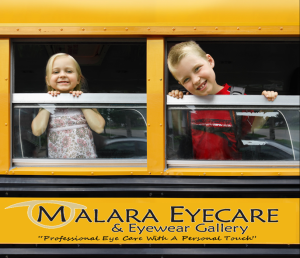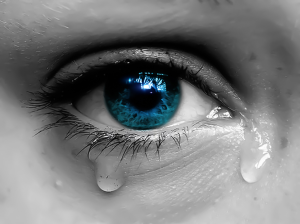
Current research shows that about 20 percent of school-aged children have undetected vision problems which are hindering their school performance. Considering 80 percent of everything your child learns will be through their eyes, it is an understatement to say that healthy eyesight is crucial to the proper development of your child. That is why it is important to make professional, thorough eye health care a regular part of your child’s overall health maintenance program. Children who are struggling with undetected vision problems often fail to progress well in school.
Your child’s visual system has little to do with the manner in which they see; rather, it involves the way he or she processes the information they have seen. Your child’s visual system is a complex process involving the combined effort of more than 20 visual abilities, and over 65 percent of all pathways to their brain. Any problems in these areas can seriously affect your child’s ability to process information. Only a complete eye examination will uncover any visual system processing problems before they severely impair your child’s ability to learn and develop.
In order for your child to learn properly, all three parts of their vision must be working together and correctly. The first is the condition of the eye. The condition of the eye pertains to eye health, visual acuity and refractive errors such as nearsightedness, farsightedness and astigmatism.
The second part is how well the eye is able to function. This refers to how well the eyes are able to focus and how they are able to move both as a team and individually. If your child’s eyes show error in these areas, they can experience double vision, eyestrain, headaches and difficulty paying attention.
The third part to this equation is your child’s visual perception. Visual perception consists of all that you see, how you are able to identify and link it to previously stored information. In your child’s case it can be how well they are able to recognize words or pictures they have already seen or being able to make a mental picture of words they see.
Only an aware adult can see signs in a child that might warrant an eye examination. Most vision problems can be recognized by those who know what to look for. There are noticeable signs that an alert parent or teacher can recognize.
Symptoms of learning-related vision problems include:
Behavioral Signs
- squinting
- holding books close to the eyes
- frequent eye rubbing
- head tilted while reading
- omitting words when reading aloud
- improper behavior
- spends too much time on homework
- seems lazy
- falling behind the rest of the class
- refers to himself/herself as stupid
- hates school
- no longer tries
- drop in scholastic/athletic performance
- double vision
- blurry vision
- frequent headaches
- poor eye-hand coordination
- constantly looks down when copying
- holds head very close to reading materials
- moves entire head, not just eyes, when reading
- frequently loses place while reading
Physical Signs
As with any disease, it is particularly important for those with a family history of ambylopia (lazy eye) or strabismus (deviating eyes) to check for any of these warning signs. If your child demonstrates one or more of these symptoms, he or she may be suffering from a vision related disorder. A comprehensive and thorough eye examination is suggested at once.
Children should have their vision tested each year. A child doesn’t know that having problems seeing across the room, seeing double, or not being able to focus on things up close, is abnormal. It is easy to confuse a school vision screening with an eye examination, but they are not the same thing. School vision screenings simply determine how well your child sees an eye chart from 20 feet away. A screening may show that your child has 20/20 vision, but that tells you nothing about the health of their visual system, or how your child processes the information they receive visually.
A comprehensive examination performed by a Doctor of Optometry is the best way to diagnose and prevent vision learning disorders in your child.
 iated with gradual (and sometimes sudden) increases in pressure within the eyeball itself, glaucoma can result in partial or total blindness over time. The damage caused by glaucoma is irreversible, and it is currently the second-leading cause of blindness in Americans over age 40 in the United States.
iated with gradual (and sometimes sudden) increases in pressure within the eyeball itself, glaucoma can result in partial or total blindness over time. The damage caused by glaucoma is irreversible, and it is currently the second-leading cause of blindness in Americans over age 40 in the United States.









 Inside your eyes is a lens that is constantly stretching, moving, and adjusting to focus the images we see. If you or your child are constantly keeping your focus up close at books or a computer, your lens has to stay stretched in one position for a long period of time. That’s exhausting! It’s like holding a push up just above the floor for hours. When we shift our focus a point in the distance, it relaxes the lens and gives it a break for a moment.
Inside your eyes is a lens that is constantly stretching, moving, and adjusting to focus the images we see. If you or your child are constantly keeping your focus up close at books or a computer, your lens has to stay stretched in one position for a long period of time. That’s exhausting! It’s like holding a push up just above the floor for hours. When we shift our focus a point in the distance, it relaxes the lens and gives it a break for a moment.

